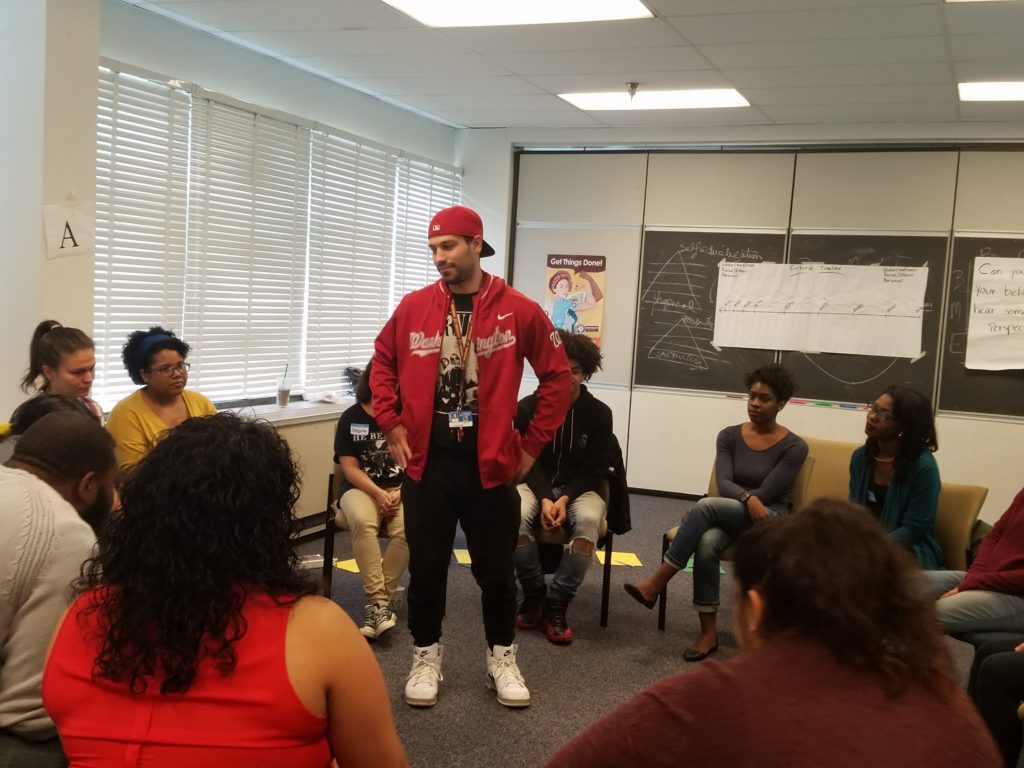
Watch the Video featuring Alumni Testimonies from Project CHANGE’s 20 year history.
"locals serving locals for 20 years."

Watch the Video featuring Alumni Testimonies from Project CHANGE’s 20 year history.

HOW LONG?
The question that arose for us in March 2020 when the schools first shut down, and our AmeriCorps service year was interrupted was- How Long?Most people were thinking- perhaps wishing- this is only temporary, a precautionary measure, till we get this infection under control. But here we are 6 months to the day March 16-September 16th. We are still not even sure where we are, or even if we are in the middle.
Where do you feel you are right now in the unfolding story?

Some experts are saying this is still the first wave. With Fall starting next week, with its usual flu season, we are a long ways away from the end. At least if it is a middle of sorts, we have to start thinking of COVID19 as a year long event. We have not lost a few months. We have lost a whole year, at least, if not more. Ignoring or minimizing what we have lost is not healthy.
BEGINNING AND ENDINGS
In the study of narrative design, research shows that the two most valuable pieces of real estate in the territory of story are the Beginning and The End. The Ending is meant to create a sense of Completion ( not closure). The Beginning is meant to invite Creative energy needed for a fresh start. This is critical to creating a coherent memory.
In this unfolding story design, orchestrated by the virus, those endings have not been cleanly completed, and these beginnings are not being freshly started. That has enormous implications for memory and how we make sense of the event. It is one of the reasons why most of us are not coping- its a broken story. COVID does not disclose enough of itself to reveal an ending and with an ending, some promise of meaning. We are stuck in the middle. Some call it trauma, the results of such narrative dysfunction.
![Lost in the Middle Of Nowhere - Kane Brown, Becky G [Lyrics / sub español] (Spanish Remix) - YouTube](https://i.ytimg.com/vi/Nn-LLXKCAtg/maxresdefault.jpg)
In narrative design practice, the middle has 3 main energies- of complication, clarification, and the call to re-commitment. We are certainly experiencing that but it is not because of us, its because of where we are- in the Middle.
B______________________________________________________M__________________________________________________E
THE KEY QUESTION
The key clarifying question for this Middle Passage is this:
What do we know from here (M)….that we did not know from there (B)….that knowing the difference ( between B and M)…. will increase our chances of reaching our desired ends. (E)
Like a voyage stuck in the doldrums of mid passage, what cargo can we ditch because it weighs us down? What adjustments to the sails are called for, and how do we repair and lighten the ship to get us moving again?
What lessons have your learned from these last 6 months?
LESSONS LEARNED
I threw this question at Jack, one of my staff this morning, and we came up with a few insights of what we had learned en route.

-`the pandemic is lasting much longer than we thought. We prepared for a sprint or a middle distance effort but it has become a marathon. We may have spent energy for the short run and not conserved enough to endure the long run. How do we build that energy now? How do we rig for a longer sail?
-the shut down has so challenged our life routine that we are forced to reconsider what matters, especially because of what we are missing. We are all on a forced sabbatical. Are we enduring it or using it?
–time seems to have lost its moorings to any particular moment, and days merge into each other so that its easy to become bored or lose our zest for life. Since we will not get these months back, what are we doing to make time matter?
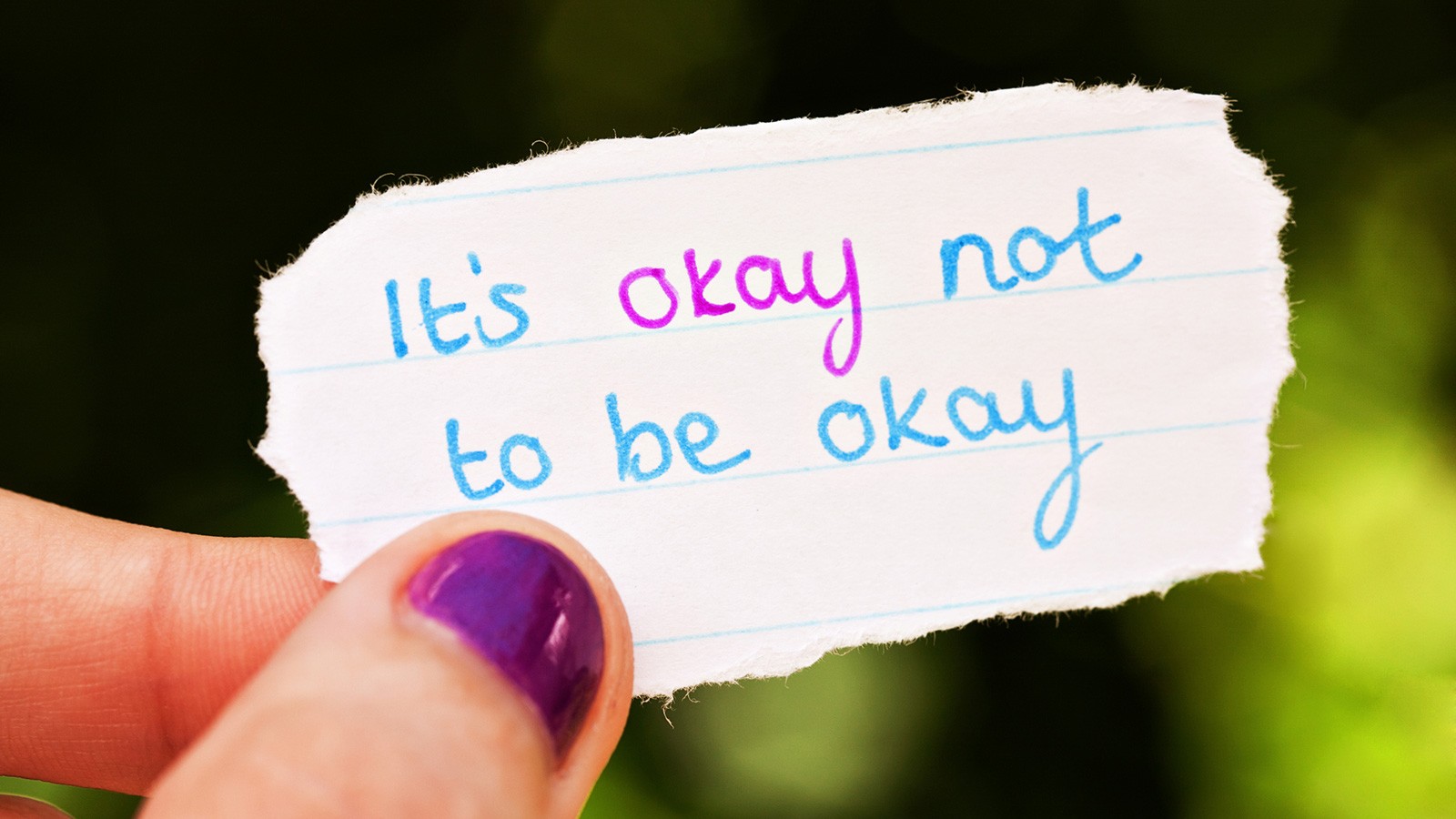
-we are all challenged to learn a new technological literacy that we did not have to bother with before- and this isolation has increased connection on another level. We are all experiencing that movie title “Far Away, So Close”.
-we, and especially parents, now understand the gift of a teacher and the role our schools play not just to educate but to socialize our kids.

-we realize how person to person “in the flesh” contact matters to our mental and emotional health. No matter how good the virtual is, it is no substitute. How can humans live without hugs and kisses and pats on the back?
–we are forced to slow down and learn patience. Some people have more patience than others, but let’s face it, none of us are really coping that well.
-yes, we are in a shared story of COVID19 but as my friend Lex likes to say, we are not in the same boat, just the same storm. Some are navigating through in their cruisers and some are drowning and some are falling overboard.
What about the second half of the question- how can we use our learning to increase our chances of a happy ending? I can only share some of what I am doing.
How are you applying what you have learned going forward?
LESSONS TO CARRY FORWARD

First, I am not trying to hurry up. Slow is OK. In fact, SLOW is better.
Second, I am not rushing to get back to normal because this abnormal in-between time is potentially a doorway into doing life differently. I am welcoming the liminal space.
Third, what the COVID finally means is dependent less on what I do with it now and more on what I do with it afterwards. So I invite the future more into my imagination. If COVID is the unavoidable hibernation, what comes next? Let’s all play Rip Van Winkle and wake up to a startlingly different world. Turn endurance into emergence. That is what emerge-ncies are for.
Fourth, when I know what I am battling with, and see that look on others’ faces on ZOOM, I know more than ever, I need to be kind. It is not the solution to every problem but right now, anything else is likely to only make things worse.

Fifth, when it is over, we will both miss it and we won’t remember much about it. So, I want to remember it-and mark the passage of time so it does not go unobserved. Hence declaring this Middle Moment today is my way to honor this place in the stream. I am using Narrative Design to consciously live today in the way I want to remember it tomorrow.
Reading the history of the 1919/20 Spanish Flu, one is stunned how the tragedy of the war years ending in 1918 seemed to have crowded out any communal memory of the death toll of 1919-20 which was a much larger tragedy. Spanish influenza was as unpredictable in its start as its end and that is the enemy of memory. But that forgetting did not serve us well in 2019/20.
CONCLUSIONS
One final learning from applying the maps and principles of narrative design to the COVID19 experience is that it proves the point- Where we are is who we are. We did not chose to be here. And though so many are blaming so many others, that to me shows a lack of Awareness meaning A-Where-Ness.
How we are feeling right now has more to do with WHERE we are and not WHO we are. I mean, how does anyone show up and survive during a pandemic? How does anyone predict or get a pandemic right? President Lincoln took 2-3 years to get the Civil War about right, and even then.
We are in the Middle. It’s messy and it’s complicated and it feels like nothing is going right. But that is how a story works. Rest assured underneath it all, the future is slowly emerging. If we are only looking backwards, we will miss it. A story works best when its plot pushes our attention forward to the cusp of “What comes next?” If time is not offering much chance for that suspense right now, then we need to invent a future that will get us back in the game. That might be the only way we can keep ourselves sane.

Hi Team,
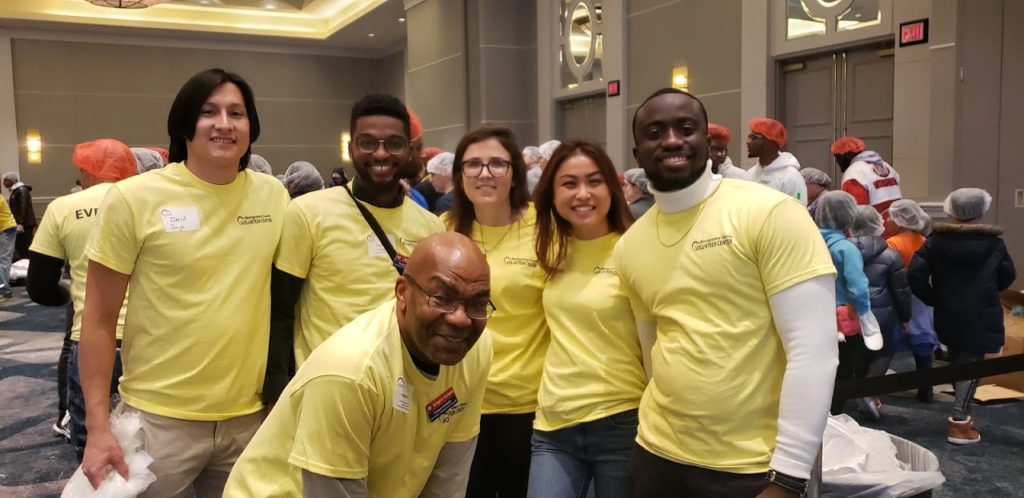
It’s Friday. I have just spent the morning on E-Grants filling in final forms for each of you to officially end your year of service and be exited from the system. You should receive some notice of that in your MyAmericorps. As I ticked the boxes about hours, dates, and compelling personal circumstances etc, I thought to myself- someone reading the document in a few years time will have no idea, none, nada, what it all meant, and what we together have achieved in this year of the plague.
How many other boxes would we need to tick to do this crazy year justice? Tick the box if the member-
-hung in there when everything they signed on for seemed to disappear
-improvised to identify and meet the need that was around them-stayed in the story of service no matter what
-supported each other through the down times
-celebrated the good times and had a laugh- and a great graduation
-compelling personal circumstances-yes, how they compelled members to care more
-got creative in finding new ways of serving the age-old needs of hunger and loneliness
-were stretched and came to know more about their own strengths and limits
-challenged to do education in a different way outside of school
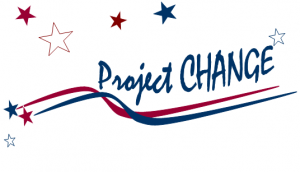
The forms on E-Grants don’t ask these questions- but that’s the problem with data. It’s all bones and no flesh. The AmeriCorps report will say that “19 members signed on for Project CHANGE in August 2019 and 19 members served through to the end of the 2020 school year and beyond.” End of story? No way!
When the rest of the country was totally upended, Project CHANGE stood up. And that is a tribute to each of you, my team, my COVID Corps.
I want to thank each of you personally for your efforts-Funa, Genean, Lex, David, AnneMarie, Jose, Jessica, Ben, Gregory, Alanna, Jason, Milton,Claire, Pearl, Angela, Jennifer, Blen, Ben M, Maria, for your dedication- above and beyond the call of duty.
You will never know the impact of your patience with that Senior who you called each week but you made her life a little less lonely. Or that girl who ran away because home was too toxic but you stayed on the case even when everyone told you to butt out. Or the support you gave to that overwhelmed teacher by organizing his grading system and exams so he could stay connected to his students. As you move on to your next year, know you did leave behind a story, a memory, a moment. Cherish that. Be proud of that.
Some of you are signing on for another year. Some of you are looking for jobs. Some of you are going back to school. Some of you are still making up your mind. But in the summer of 2020, you were serving with AmeriCorps Project CHANGE and when the world went crazy, you stayed sane. When the world shut down, you did your best to stay open for business. When people, friends, family of yours, got sick, isolated or even died, you did what the AmeriCorps pledge says- you got things done. You brought people together. When faced with adversity, you persevered.
There will be future AmeriCorps years of Project CHANGE. And we know that we will eventually get through this. But as RFK said, “it is the rare privilege few generations get, to rise to meet the challenges of their time.” Team 2019-20 have. We have. Don’t you ever forget that!
Proud of all of you-Thankful for all of you.
No more Sign In Sheets-(Ha Ha.)
Over and Out.
Paul

National Catholic Reporter July 13 2020 Yonce Shelton
Christ’s followers are to be known by their fruits. As I wake from my slumber, I am compelled by the thought of all the fruit at the food pantry that must be sorted and distributed today. This service is fruit borne by belief in Christ. Before I head off, I affix a small pin with an ‘A’ on it — a reminder of my responsibility to the nation which supports my position through government programs for national service. I remember that the inseparability of theory and practice is not just a biblical idea; it is also an American idea.
Benny Mattis wrote this last year while serving as a year-long AmeriCorps volunteer with Christian Appalachian Project (CAP) in Kentucky. AmeriCorps volunteers meet critical human and community needs across the country and receive benefits to, among other things, help with professional opportunity and growth.
CAP is one of hundreds of programs across the country that offer full-time, faith-based service to help transform communities and lives. Based on the unique mission, calling and context of these programs, each one supports the spiritual, vocational and career development of volunteers living out faith in service to the world. Many volunteers in these programs are recent college graduates.
For decades, these programs have acted on the principles in Christus Vivit, Pope Francis’ 2019 apostolic exhortation on young people, which recognizes that “social commitment is a specific feature of today’s young people.”
Especially now, young adults need pastoral guidance, good mentoring and chances to adjust their plans. They need opportunities to contribute to the common good. Looking back today, Mattis said his service experience “allowed me to build relationships across cultural divides, prayerfully discern God’s will for my life during a time of uncertainty, and pursue further education with an AmeriCorps Education Award.”
Government efforts can provide opportunities for young Christians to give and receive — and are not without precedent. Read More
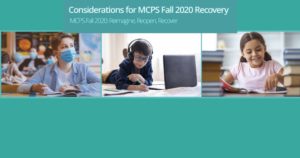
The MCPS Fall 2020: Reimagine, Reopen, Recover Guide provides an overview of a few of the recovery models we are considering at this time, in light of the information and guidance MCPS has received from the Maryland State Department of Education and from county health partners. This is just a draft guide and MCPS will continue to amend, adjust and improve upon these recommendations as it receives feedback from you—our parents, staff and students……
State Requirements for Opening Schools
School districts must:
Complete and post recovery plans on the district website by August 14. The State Department of Education will review all plans.
• Address equity in all components of the plan.
• Establish a recovery plan stakeholder group that is representative of its schools and community.
• Assess all students to identify and address gaps in learning.
• Follow MSDE standards and provide instruction across all key content areas.
• Follow IDEA, 504 and ADA plus all other special education protocols and laws.
• Follow MSDE, state and federal health guidelines and procedures for individuals who test positive for COVID-19.
• Follow MSDE, state and federal health safety protocols around food service, daily cleanings and other school operations.
• Follow protocols for the safe transportation of students to and from schools.
• Develop a system for tracking attendance when students are engaged in remote learning.
• Develop a communications plan to reach its stakeholders.
• Maryland Together: Maryland’s Recovery Plan for Education
• 2020 Summer Programs Surveys for Staff and Families • Fall 2020 Recovery Surveys for Staff and Families
• Benchmarking with large school districts across the state and country 5 S
Access the report here
By Donna St. GeorgeJuly 11, 2020 at 2:49 p.m. EDT

Maryland’s largest school system would open the school year Aug. 31 with remote learning and gradually bring students back on campus for up to two days a week in the fall, under a 21-page proposal released Saturday.
The goal for suburban Montgomery County would be to get students inside schools by late November. But that would be guided by public health conditions, and if parents don’t want in-person learning they could opt for full-time distance education.
Debate on the hybrid approach amid the novel coronavirus pandemic sparked strong reactions. Some argued it was not yet safe to return to schools as cases continue to rise, while others said they hoped to see children back in their classrooms sooner.
“We’re faced with a tension between parents who want us to flip the switch and go back to pre-March 13 — to five days a week in a brick-and-mortar school — and teachers with very valid concerns about health and safety,” said Patricia O’Neill, a school board member, who said hundreds of emails had come in on the topic.
The approach, slated for discussion Tuesday by the school board, was not completely unexpected. Montgomery officials had said in June that they were exploring a hybrid setup, and others school systems locally and nationally have moved in that direction.
Montgomery schools push toward part-time, in-person learning for fall
President Trump recently stepped up his call to fully reopen the nation’s schools, threatening to cut federal funding to those that don’t. But health officials and educators have cited the importance of local infection trends and a more cautious approach. More than 131,000 people nationwide have died of covid-19, the disease caused by the coronavirus.
In Montgomery, Superintendent Jack R. Smith called his proposal a “draft guide” that would be amended as parents, students and staff members continue to weigh in. State officials, who have the ultimate say in reopening schools, will review Montgomery’s plan, which must posted to the school system’s website by Aug. 14.
Under the plan, elementary students would be divided into A and B groups, attending classes in person on a Monday-Tuesday or a Thursday-Friday schedule, with remote learning on other days. Schools would be cleaned Wednesdays, as students continue with distance instruction and teachers focus on professional development.
Middle school students would similarly be separated into A and B groups, with two days a week on campus, while high school students would split into three groups, with less time on campus — four days every three weeks.
First to return to campus buildings would be students in transition grades — prekindergarten, kindergarten, sixth grade and ninth grade — and those in specific special-education programs.
School days would be longer and more robust than last spring, when educators scrambled to make distance learning work and many people complained about a lack of live instruction.
In Montgomery County, schools and parents clash over how much teachers and students are connecting
Come fall, school days are expected to include more live, teacher-led instruction, for fuller school days. In elementary school, breaks will include lunch and recess, with school days that offer art, music, physical education and other special classes.
Some pointed quickly to issues that seemed unaddressed, including how teachers would juggle teaching remotely to one half of the class while teaching in-person to the other.
Others wanted to know more about protocols for testing and isolating students who get sick. And sanitizing Chromebook laptops. And keeping masks on kindergartners.
And ensuring air circulation and filtration are adequate inside buildings.
“This is really the beginning of the conversation,” said Cynthia Simonson, president of the Montgomery County Council of Parent-Teacher Associations. “We need so much more for it to really function and make sense, especially at the high school level. This is a framework.”
Teachers spoke out almost immediately, with some wondering how returning to face-to-face instruction could possibly be safe. Some noted that health officials in Missouri recently reported more than 80 coronavirus infections from a Christian summer camp.AD
“I’m really nervous about going into a school building while cases of covid-19 are still rising and there’s still so much we don’t know about it,” said Josh Halpren, a middle school history teacher who noted several of his colleagues are pregnant and others have health conditions or vulnerable family members.
“I think it’s just too risky,” he said. “This is something that’s killing a lot of people. To ask teachers to put themselves on the line like that is something that’s not okay with me.”
Halpern and other teachers suggested the school system go all-in with distance learning, so students get what they need without danger to them or others. “Distance learning can work, and it’s a whole lot safer for everybody,” he said.
Lloyd said that among teachers he has heard from, there is a real desire to get back to face-to-face instruction — “nothing substitutes for that,” he said — but health and safety are paramount.
On-campus instruction would mean smaller class sizes and fewer students in school buildings on any given day. Masks would be required and hand sanitizer stations installed, with social distancing in classrooms and in hallways.
But even with fewer students on campus, bus transportation would be especially challenging — with 12 students on a buses that previously held 50.
Families would need to opt in to bus transportation, and school officials said they were prioritizing buses for students in elementary and middle schools.
Lyric Winik, president of the Bethesda-Chevy Chase High School Parent-Teacher-Student Association, pointed out that one size does not fit all in a school system so large — with 166,000 students and 208 schools.AD
“How much flexibility are the individual schools going to have to modify this so it works for them?” she asked.
Others said the proposal seemed like an effort to make the best of trying times.
Vincent Russo, a father of three in Rockville, said it looked like the school system was trying to balance things and noted the situation required patience from parents. “I would love them to spend more time in school,” he said. “But this is the reality.”
Roberta Burkes, a mom of three in Potomac, said she had heard some parents say they won’t send their children into school buildings but she believes it’s fine with proper precautions and cleaning. Burkes did a two-month stint as a nurse in New York, working on the front lines.
“We’re going to adapt to whatever needs to happen for the school year,” she said. “We’ll go with it either way and make it work.”AD
Opinion by David IgnatiusColumnist July 8, 2020 at 6:07 p.m. EDT

Congress is weighing a big idea as it bargains over the next stimulus package: a bipartisan proposal to expand national-service programs to create jobs, help contain the coronavirus pandemic and begin to unify a divided country.
This column has been updated.
This plan would be a powerful tonic for some of what’s ailing the United States. It’s evocative of the New Deal programs that helped the United States through the Great Depression. And it’s supported by a star-studded group of Republicans and Democrats, including many Iraq and Afghanistan veterans from both parties who are backed by the bipartisan political action group With Honor.
The battleground this week is the Senate. Urging Majority Leader Mitch McConnell (R-Ky.) to include the $16 billion measure in new stimulus legislation are the bill’s co-sponsors, Sens. Roger Wicker and Cindy Hyde-Smith, both Mississippi Republicans, and Sen. Christopher A. Coons, a Delaware Democrat. Read More
Joining them is a diverse Senate alliance that includes people you’d like to see, at least temporarily, working together: Sens. Cory Booker (D-N.J.), Lindsey O. Graham (R.-S.C.), Jack Reed (D-R.I.), Marco Rubio (R-Fla.), Tammy Duckworth (D-Ill.), John Cornyn (R-Tex.), Kamala D. Harris (D-Calif.), Angus King (I-Maine), Tammy Baldwin (D-Wis.), Susan Collins (R-Maine), Amy Klobuchar (D-Minn.) and Marsha Blackburn (R-Tenn.).
The House is waiting for Senate action, but the proposal is backed there by a bipartisan team that includes two veterans, Reps. Chrissy Houlahan (D-Pa.) and Mike Waltz (R-Fla.). House Speaker Nancy Pelosi (D-Calif.) is likely to support the measure if it’s included in a Senate stimulus package, her colleagues say.
Let’s be honest: Centrists like me gush about proposals like this that cross party lines to serve the common good. But national service isn’t a cure-all. It won’t stop racial and economic injustice or resolve the other dizzying problems that will confront the next president. But it’s a start. It will at least help more Americans to work together for the country — the way our military, first responders and front-line health-care workers do now.
Full coverage of the coronavirus pandemic
The Senate proposal is dubbed with one of those catchy acronyms beloved by legislators, the Cultivating Opportunity and Response to the Pandemic through Service (CORPS) Act. It would provide $16 billion over three years to double the number of AmeriCorps positions to 150,000 from 75,000 in the first year, and then increase to 200,000 and then 250,000 in the second and third years. The bill would also increase the stipend to $22,000 from $15,000. After completing service, young people would be eligible for $6,000 grants to finance their educations at community colleges.AD
All 50 states have AmeriCorps programs, coordinated through the Corporation for National and Community Service. The newly commissioned national-service volunteers could work at anything from building houses (through Habitat for Humanity and other faith-based programs) to feeding hungry people (through the Agriculture Department’s Anti-Hunger Corps).
Wicker, a Republican co-sponsor in the Senate, sees the bill as a bipartisan way to put people back to work after the pandemic: “Helping our nation respond to and recover from the coronavirus outbreak will require an all-hands approach,” he says. Coons, the Democratic co-sponsor, sees the legislation as a way to provide meaningful work for “millions of young people who aren’t sure what to do next.”
Some advocates of national service argue that it should be mandatory, like the draft. But Coons notes the difficulty of quickly organizing jobs for what he estimates would be 3 million draft-age Americans. Better to scale up slowly, he says. But over time, “we should do everything we can to make service an expectation.”AD
What’s powerful about this idea is that it would draw together people from different racial, economic and geographic backgrounds into a common enterprise. In this way, argues David McCormick, an Army veteran who is now chief executive of Bridgewater Associates and has helped mobilize support for the bill, “National service would go a long way toward solving some of the most important challenges our country is facing — to overcome our divisions and reaffirm our common purpose.”
Waltz, a Republican and former Army Green Beret, argues that the legislation could be “a game changer for the country.” He says that he tells skeptical Republican colleagues: “If we’re going to send out stimulus checks, let’s get some service for it.” Houlahan, a Democrat who served as an Air Force officer, agrees that national service “is a way of pulling our nation together” in crisis.
When my father, who will turn 100 in November, talks about the Great Depression, he remembers how President Franklin D. Roosevelt mobilized idle people — and national hope — through programs such as the Civilian Conservation Corps and the Works Progress Administration.AD
Perhaps Senate Republicans will do the right thing and support a big idea whose time has come again.
The Post’s View: The U.S. needs an army of workers to reopen. These senators have an idea for getting it.591 Comments

The Principles of Narrative Design (POND) kick in whenever we face the question-What should we do now? They teach us five important lessons.
1.Who we are is Where we are.
2. Where we are is what we are In-Between.
3.We are always already in between Beginnings, Middles and Endings.
4.What to do is determined by where we want to end up.
5. Being Aware boils down to being A-Where.
Let us Apply this to our current situation with AmeriCorps Project CHANGE serving MCPS in the time of COVID19. Let us map what lies ahead.

WHERE ARE WE?
Right Now, we are in the summer, in-between the end of one year and the beginning of the next. The energy that should normally boost us is the creative spark of a new beginning, a new year, a fresh start.
WE FINISHED BUT WE DID NOT END
But this is a beginning that is following an unfinished year, a Beginning that is not following an Ending, but an interrupted Middle, due to the Virus. That means that whatever we are starting has to contend with what was missing from the Ending of this past year. How can you say Hello if you have not said Goodbye?

It is not a clean or even a fresh beginning because there was no Ending. Rather, we suffered an abrupt interruption that slowly faded into a hopeless finish that struggled to create the feel of an Ending. The year just petered out. Just think of all the graduations we had to improvise. The Beginning will be under the same cloud, caught up in the same energy field of the confusing, broken and contested end. That means that there is lots of unfinished business to address.
WE DO NOT BEGIN AT THE BEGINNING
This tells us something important. Whatever we are planning, we need to be clear that “the Broken Ending of the 2019-2020″ is what we begin with. We have to be dealing with what the students have missed out on, dealing with how they have felt about it, dealing with what their disappointments and the hopes and expectations that arise from that. Translation of this into action means we must allow them time and space to give meaning to their own experience. More than that, there are life lessons on offer here that no curriculum can replicate.

SAYING GOODBYE
To just launch into 2020-2021 as if it were just another year would be to diminish or discount what they have been through. Part of the creation of a space for a new beginning is to clear the space of the troubled and messy ending. There are rituals for that, such as naming what was bad and what was good and declaring in a ritual “And we say goodbye to that.” It means that what we are starting off with is some process of grieving and loss. For some, it may even amount to trauma. Trauma, grief or loss provides no easy platform for kickstarting positive learning.
The clearing away of that Ending space invites them, the students and us- to create the energy we need to start again, Only then can we set some goals for what they want to catch up on, repair, or make good on. The task for all of us is to rebuild the platform for learning before they even start classes again. That means any wholesale rush to curriculum catch-up may be ignoring what is most necessary to start again, which is the connection for learning, the peer to peer support, the teacher-pupil connection and relational energy that goes with all of these. In other words, the SEL needs will be paramount. Summarized, there can be no reconnection to learning unless there is a connection for learning.

BEING READY NEXT TIME
MCPS like other school districts is still deciding when to announce a plan. The latest outbreak of COVID19 is a cautionary tale about relaxing health safeguards too early, or giving in to urgent pressures of other decision makers who have no expertize in public health. We therefore need to build in contingency plans that were missing back in March when we had no idea of what was ahead. We need to ask ourselves the clearing question
“What do we know from here that we did not know from there, that knowing and applying it, increases our chances of ending up where we need to go?”
WHAT WE KNOW ALREADY
We know that COVID19 is still in charge.
We know all we can do until a vaccine is developed is react in the safest way possible.
We know what is at stake is the life and health of the child, not just their educational needs. It is also the health of their families. “Festine Lente” is the old Latin maxim “hasten slowly.”
Also, we know that children are higly adaptable beings. They are built to learn, one way or the other. Their access to learning should not be totally conflated with being able to go to school. Maintaining schools is not the same as maintaining learning. Should we enter another period of intertrupted schooling, or unreliable virtual schooling, what do we need to remind ourselves of what matters? Where do we need even now to concentrate our resources?
FROM NOW TO THE END OF THE YEAR

All this is happening in the last four months of a fiercely divisive election year so first, we need to build a wall around our children’s health that ensures they are not used as bargaining chips or election strategies. That has to be out of bounds.
Second, we need to be focused on CONNECTION, keeping students connected to their peers, and teachers and mentors STAYING CONNECTED with their students. If the data is correct, 30% of students have gone AWOL since March. They are not logged on or checking in. Imagine a 30% no-show for ordinary school!
Third, we need to be focused on what the COVID19 is teaching them about life, about themselves, about their resilience, about their own needs. Many have found creative ways to empower themselves and have not waited for adults to teach them anything. They know from their TikTok world that socially distant does not have to mean socially remote. They are digital natives and know how to cope better than we do. Only this week, when Saturday School launched its summer school, a group of students were stuck in a ZOOM waiting room and when we caught up with them, they were organizing their own learning lessons.

THE RIGHTS OF CHILDREN
Children deserve a childhood where as far as possible, they are free to learn and play and have fun, make creative mistakes and be innocent. The adults in their lives are responsible for keeping them safe and secure. One of the biggest traps of the COVID19 crisis is that we drown our kids in the energy fields of our anxiety and turn them into little adults, way before their time. One of the requests of children we keep hearing during this time is “Let us still be Kids. Just because you adults have not got your shit together does not mean you can load all this ..@*#@!….. on to us.”
BUILDING MEMORIES
Lastly, if we are in between one year that never ended and another year that is stumbling to the starting blocks, we had better take care of the memories that our efforts right now are creating. What do we want them to remember about COVID19? In the POND method, this is the crucial question to rocket us out of the heresy of NOW.
We want them to remember that we did not abandon them.
We want them to remember that we believed that they still had the ability to learn and play.
We want them to remember that we did not blame or lose hope, or turn on one another but that COVID19 brought us all closer.
And finally, we want them to remember that we worked hard to not let this happen again.
We want to ensure this experience does not overshadow the more important things about their tender young lives. We need to make sure that the virus does not become the main memory of these times. Something else, something better must come out of it.

COVID19 AS A LIFE LEARNING CURRICULUM
The curriculum ahead of us, from September 2019 to March 2020, has to be that we are together, we are creative, and though we are not perfect, that with patience, resilience and resourcefulness, together we overcame this.
The education for life that our kids need, and that COVID19 unexpectedly provides us is this chance to model how adversity can make us all the stronger. We may have suffered, but on the other side we are better people for it. That is the heart of the matter. Everything else, while it matters so urgently now, won’t matter a ‘hill of beans’ in the end. COVID19 has interrupted education, but COVID19 itself is an education. Time to learn what we want to teach.
……
National service, national dividend
Steven Pearlstein wrote this piece for The Washington Post. July 5th 2020 G2
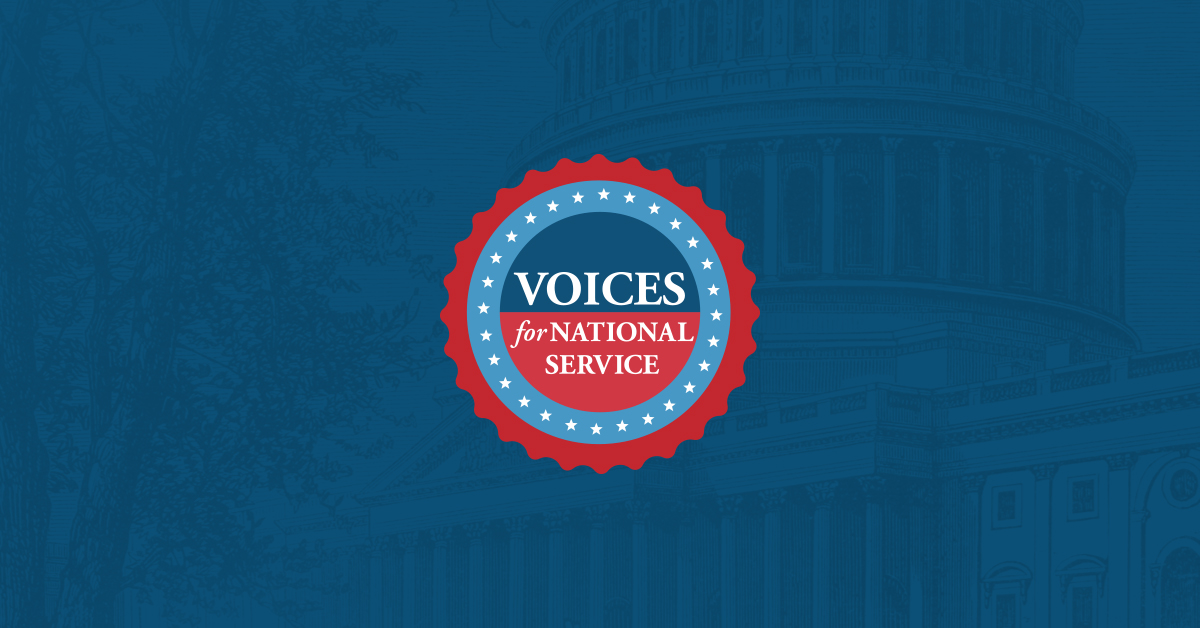
The greatest threat to American capitalism and American democracy is the erosion of our social capital, the trust and responsibility we feel for each other and for the institutions that hold society together.
One way to begin rebuilding social capital would be to require all citizens to devote two or three years to national service sometime during their lifetime. Service could be performed when people are young, or after they retire, or sometime between. It could be provided through government programs such as the military, the Peace Corps or a reinvented Civilian Conservation Corps, or through an authorized nonprofit entity such as Teach for America, a local homeless shelter or arts group. Not only would such service improve the lives of our fellow citizens, but it also would give all of us a chance to meet, work with and live among people who are different from ourselves.
National service would reinforce the idea that we all have obligations to and responsibility for the country and each other. But it could also reinforce the idea that each of us has an equal claim on the nation’s bounty, tying national service to a national dividend that every citizen would receive. One way to do that would be for the government to set up a trust fund for every child born in the United States, to which it would contribute $2,000 every year until the child reaches 18. The money would be invested in a broad portfolio of U.S. stocks and bonds, so that by the time they set out in life, every young American would have around $50,000 that could be used to pay for college, start a business or put a down payment on a house.
I realize that at a moment when our politics is so polarized and the legislative process so dysfunctional, it sounds positively naive to imagine something so communitarian as national service tied to a national dividend — or for that matter, any of the other ideas on this list. But that is precisely why they would be so politically appealing, tapping into the deep craving among voters for initiatives that are practical and unifying and offer hope for the future. The administrative and financial details can be worked out later. For Biden, the more immediate challenge is to drag the political conversation out of an unsatisfying and unproductive rut by offering a set of bold, fresh ideas that promote equality and reinforce the feeling that we are all in this together.
Steven Pearlstein wrote this piece for The Washington Post.
Opinion by Nate Tinbite, Ananya Tadikonda and Matt PostJuly 3, 2020 at 2:30 p.m. EDT
Nate Tinbite is a former student member of the Montgomery County Board of Education and a recent graduate of John F. Kennedy High School. Ananya Tadikonda is a former student member of the board and a graduate of Richard Montgomery High School. Matt Post is a former student member of the board and a graduate of Sherwood High School.
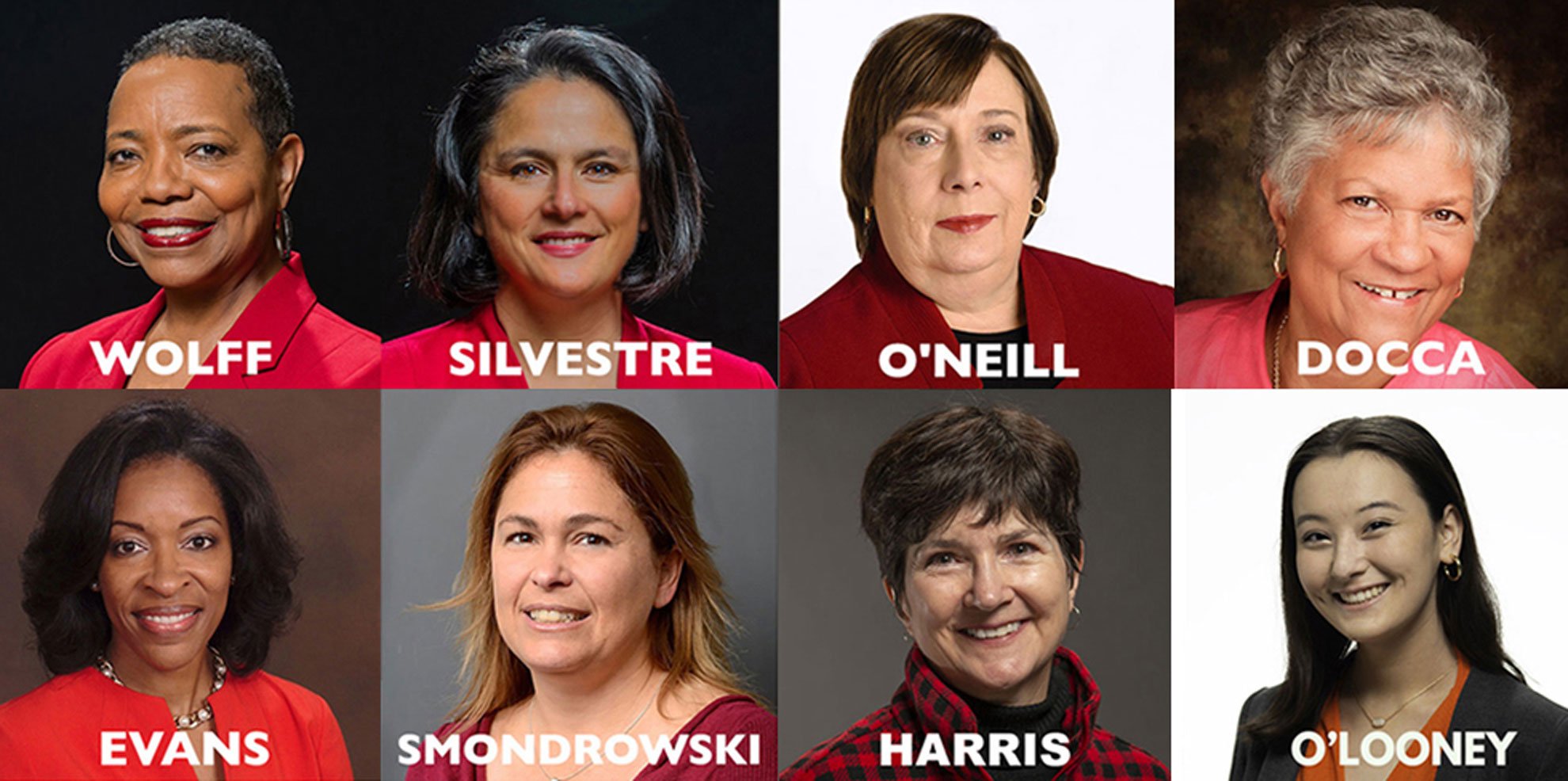
Last month, in the parking lot of a Bethesda library, a thousand Montgomery County residents raised their hands and swore their commitment to dismantling white supremacy.
A few months earlier, just a few miles away, a smaller crowd formed in the cafeteria of Quince Orchard High School. This crowd gathered not to fight racial injustice but to uphold it: to loudly oppose the school system’s nascent study of boundary lines and countywide segregation. At this public meeting, one parent took the microphone and, speaking of black, brown and poor children in their schools, complained that “you can’t put that burden on us.”AD
The most important question now is: which voices will continue showing up and which voices will Montgomery County’s elected leaders heed?
We must recognize that the outrage that has exploded in the wake of George Floyd’s death goes much deeper than any individual police killing. We are witnessing the rejection of a style of politics that has been more willing to delay on behalf of a prejudiced few than to push ahead for everyone else. In Montgomery County, there is no greater example of that approach’s insufficiency than the enduring segregation of our schools. Read More
We write as three successive student members of the Montgomery County Board of Education who, against fierce opposition, proposed and passed policies of school integration. Amid this renewed national conversation on race, privilege and systemic injustice, we must give Montgomery County’s elected leaders a clear mandate to push ahead in truly making our schools equal.AD
You might think integration would be a simple proposition for a progressive county. After all, integrated schools are empirically proven to produce the kind of equality that the country is marching for. For black and brown children, integrated schools lead to higher test scores, increased graduation rates and higher levels of college enrollment. Importantly, they prepare all students to live and work across racial lines without prejudice. And according to Stanford professor Sean Reardon, who led a recent study on modern segregation, “the only way to close the [achievement] gap is to racially integrate schools.”
But still, 65 years after Brown v. Board of Education, “de facto segregation by race, ethnicity, language, and income undermines student achievement” in Montgomery County. Why? As elected officials who sat at the table where these decisions were made, we can tell you.
Our former colleagues on the school board are good people and have a deep, demonstrated commitment to racial justice in our schools. But, ultimately, their charge as elected officials is to respond to those who show up. And when the board pursues progressive policies, it is often the vocal, anti-equity minority sending the most emails, writing the most letters and speaking out the loudest.AD
This asymmetrical pressure has led to a kind of overcautious policymaking that too often ends with more data collection than action. In the late 1990s, white parents mobilized to exclude Bethesda-Chevy Chase and Sherwood high schools from the far more diverse consortium system. In 2018, several community members advocated for their school to be named after civil rights icon Bayard Rustin while simultaneously asking not to increase the number of black and brown students assigned to attend there. Just last year, under pressure from an angry Facebook group, the school system asked a firm studying countywide segregation not to make any recommendations on how to remedy it.
Make no mistake: The anti-integration contingent some fear upsetting does not represent our county. Stephen Austin — who ran for school board on a platform of opposing policies of integration and whose slogan “Neighborhood Schools”could have come straight from the signs of segregationist protesters in the 1960s — lost badly in the Board of Education primary last month. Despite raising more money than almost any other candidate, he got a smaller percentage of the vote than President Trump did here in 2016.
Through that election and the enormous recent protests across our county, the people of Montgomery County are giving the Montgomery County Public Schools a go-ahead to pursue bolder policies of racial and socioeconomic equality. We can’t stop there.AD
Sixty years from now, our sons, daughters and grandchildren will look back to this moment of division. They will look to what we did: the choices we made, the values we upheld and the policies we passed to push back. We ask our community: Will we be the forgotten dawdlers of history, those who believed in justice but lacked the courage to go further than post on social media about it, or those who bravely stood up and fought for what was right?
People of Montgomery County: Let’s show up, finish the job and integrate our schools.
Read more:
Karin Chenoweth: As long as Montgomery County fails to teach children to read, it will have gaps
The Post’s View: Montgomery County has made little progress on its achievement gap
Jack R. Smith: The growing achievement gap in Montgomery County schools must be addressed